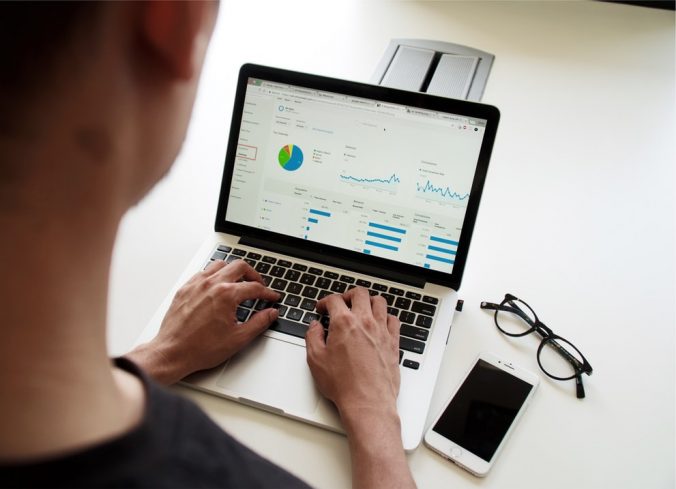The days of Matt Cutts announcing Panda or Penguin algorithm changes on keyword stuffing and duplicate content are long gone. There are hundreds of various signals that Google evaluates to determine SEO rankings, but only a tiny number are essential.
It’s important to remember that ranking signals and best practices for on-page SEO differ. Therefore, even if something isn’t on our list, it may be insignificant.
For instance, a well-organized website architecture makes it easier for Google to comprehend your website. In addition, PageRank from incoming connecting domains is distributed through internal links.
Additionally, many articles cover the entire spectrum on websites like Backlinko and Ahrefs. This article focuses on the essential elements; it only covers some of them. Therefore, we won’t discuss exact match domain names, picture alt tags, or pop-up advertisements in this piece.
But if you nail these eight points, ranking for complex search phrases will be easy. See our post on the most important SEO KPIs to monitor for more information.
Useful Information
Google has been optimizing its Search algorithm to produce high-quality material for years. They advanced it when they revealed a new ranking factor known as the Helpful Content Update in August 2022.
This new ranking criteria assess how valuable and fulfilling your material is to the people reading it. Does it offer something special, or is it just a compilation of what others have said? Is the whole thing enjoyable?
A weighted site-wide classifier called the Helpful Material Update analyzes your content to evaluate whether you offer a helpful range overall. Even user-generated content is taken into account by this ranking criteria. The easiest method to recover if your website receives this penalty is to do a content audit and eliminate or enhance as much of your website’s material as possible.
Search Intent Alignment
Google can only fulfill its role as a search engine if it provides its users with the best results. As a result, signals for priority ranking are evidence of relevance. Search engines crawl the on-page content, meta tags, and alt text to grasp the topic of your website to assess relevance.
Google’s semantic search tools are constantly developing to unearth the hidden intent in information. The search engine scans beyond exact-match keywords and parses phrase structure and entities to grasp the context. In November 2019, Bert launched, further enhancing Google’s capacity to understand complex language.
But what does SEO mean by search intent? When someone enters a search query, their purpose is what they hope to accomplish. These intentions are typically divided into three groups by SEOs: transactional, informative, and navigational.
Reliable Backlinks
A page receiving high-quality links from relevant and reputable websites tells Google that the page also has subject authority. Backlinks are still one of the three main elements affecting search engine rankings because of this.
But those times when link building was just a numbers game are long gone. Volume is still essential; the more times something is brought up in a specific setting, the more weight it gains.
However, as you can see from Google’s Webmaster Guidelines, relevance and quality are more important than the number. To increase the page’s authority, citations from relevant, high-authority websites are crucial.
Anchor Texts
Another significant indication in Google’s ranking system is anchor text. Unfortunately, in the hands of unskilled SEOs, it’s also one of the riskiest. The anchor text provides more context to the page the link goes to users and search engines. Even though Nofollow links don’t carry PageRank, Google now views them as a context indication.
Why does link anchor text represent such a risky signal? When exact match keywords are used carelessly, it is straightforward to manipulate. The exact match anchor frequently appears awkward and out of place in a piece of information. Instead, while establishing backlinks, SEOs should employ broad match, long-tail, or even wholly omit the target term.
Brand Mentions
The emergence of social media presented Google with an intriguing problem. It wanted to consider social media links in a different way than it considered website backlinks. But it also needed to pay attention to the significance of many people talking about a particular brand. They, therefore, began monitoring brand mentions.
Unlinked brand mentions provide Google with information about the popularity and expertise of your brand, along with sentiment and tone. These can also be viewed as signals of trust.
SSL and HTTPS
Speaking about trust, Google values it much. Several indicators point to a site’s credibility, but you can think of HTTPS as the key. Although not all websites that utilize HTTPS have amazingly effective SEO, all websites that don’t use it have less effective SEO.
Optimized Headings & Title Tags
Title tags continue to carry significant weight, making them one of the important Google search ranking variables. Google continues to place a lot of weight on keyword-rich title tags, even though meta keywords have long since lost popularity and meta descriptions are now produced more for click-through rate (CTR) than for rankings. That’s because titles fulfill a crucial function by briefly and accurately summarizing the entire page’s contents. As a result, Google relies on them to quickly sort the page.
H1 tags are also an effective way to tell Google what the content of your website is, even though they are less effective than title tags. Additionally, users are informed that they are on the correct page after clicking through from the SERP.
Quick Page Load
Google prioritizes usability factors, which generate a lot of noise. A few of the myths we’ll explore later result in people hearing this information and drawing incorrect judgments about how the search engine assesses usability. The fact is that few factors have a more significant impact on usability than site performance.
According to over half of your users, a page should load within 2 seconds. It follows that site speed should be considered a key usability metric. The content on your website can be of the highest caliber everywhere. However, if it doesn’t load, it won’t be ranked.
Mobile / Tablet Compatibility
Mobile friendliness is a non-negotiable usability signal, similar to site speed. Google began implementing mobile-first indexing in 2016. They had broadened the implementation by 2018. The websites that have yet to switch to mobile-first indexing might anticipate doing so soon. Pay attention to mobile reports coming in from Google Analytics and optimize underperforming pages because your site’s performance on mobile devices significantly impacts its rankings.
Prevalent Misconceptions About Rankings
Wild extrapolations may result from knowledge of Google’s emphasis on relevance, authority, and usability. These rumors may eventually be “verified” by anecdotal evidence or unreliable site testing, spreading false information. The following are some of the most prevalent incorrect SEO ranking factors:
Bounce Rate
The Google Analytics indicator known as bounce rate helps determine whether a page successfully meets its objectives. A low bounce rate is ideal if the aim is to, for instance, persuade people to peruse more pages of your website.
That being said, a high bounce rate is not necessarily a bad thing. Large content hubs or websites like Wikipedia have significant bounce rates because visitors find the information they need and then leave. That is the perfect user experience for those visitors because they want to avoid having to keep searching the website for the answers.
A high bounce rate is expected if you publish a top-of-funnel page to raise brand awareness and build credibility.
Because Google cannot generalize low or high bounce rates, bounce rate is not a ranking criterion. Simply put, the signal is too noisy for algorithms to exploit. Since you, the human, can only give it subjective context, this knowledge is only for your use.
On-Page / On-Site Duration
Time on page is another Google Analytics indicator that has been misinterpreted as a ranking factor, similar to bounce rate. As with bounce rate, Google doesn’t include time on site because it’s impossible to use the data globally.
A blog post with 500 words will have a shorter time on the page than a blog post with 5000 comments, assuming readers read both entries. The post with the shorter time on the page is only sometimes less helpful as a result.
Dwell time is another statistic that is frequently used. The mere fact that someone stays on your website longer does not imply that they are enjoying themselves. The exact reverse may be the case.
Content Length
The length of a piece of content and its SEO performance are strongly correlated. This is so that users would be satisfied because more comprehensive information is more likely to be in-depth and helpful. It’s not because Google cares about word counts at all.
This can give rise to misunderstandings that result in wildly off-base conclusions. Expanding the copy to 2000 words if it only needs 500 to discuss a topic does your content no favors fully. Fluff is always pointless fluff. You’ll succeed if you develop your content strategy around value rather than quantity.
Page View Count
We previously suggested asking the question, “Is this a cause or a result?” to determine whether anything might be a ranking indicator.
An everyday use of this question is to page visits. More page views result from improved SERP visibility and good SEO. Page views are the outcome of good SEO; they are not the cause. If you read it backward, you’ll assume that page visits constitute a ranking signal, which is untrue.
Moz Domain Authority
Some SEOs continue to use Moz DA as a ranking factor. It isn’t. In actuality, Domain Authority is a tool to compare websites that are in the same niche. Google ignores it, but it forecasts a site’s ability to rank for related keywords.
Social Media Utilization
The most infamously misunderstood measure is social media shares, which we’ll get to shortly. People are drawn into the correlation vs. causation fallacy by social media shares, as we previously highlighted because pages that perform well in SEO typically perform well in social media as well.
There is no proof that social media links affect rankings. We still view social media shares as a type of trust signal, but brand mentions rather than links are what matter. A positive sign for your brand is when consumers discuss it.
External Links
Unbelievable as it may seem, some SEOs still believe that obtaining outbound connections from reputable websites will put them on Google’s front page. Google wouldn’t use anything that could be so easily manipulated as a signal. Although it may improve user experience to connect to reliable sites, this is only true if the link adds anything relevant to the user’s context.
It’s a good time to do anything because it’s not a ranking criterion. However, if you start with the changes that matter most, other parts of your plan will also improve as a result of the results. Make sure to let lengthy lists of ranking factors divert your attention from the most significant adjustments.

